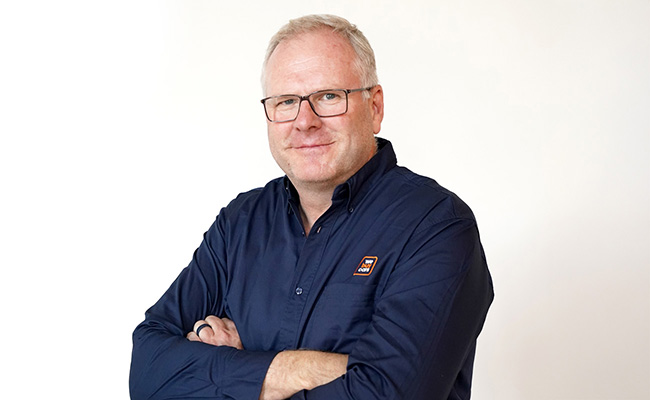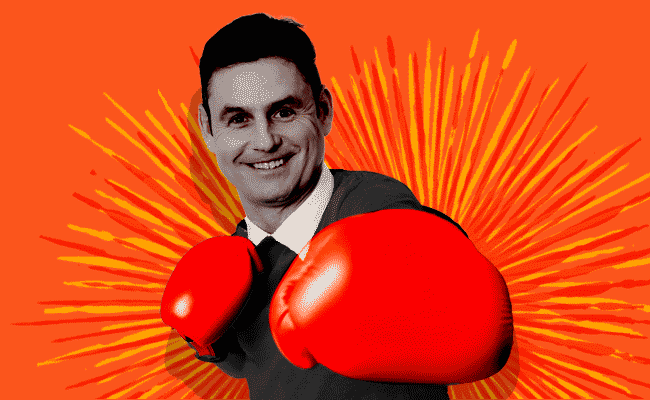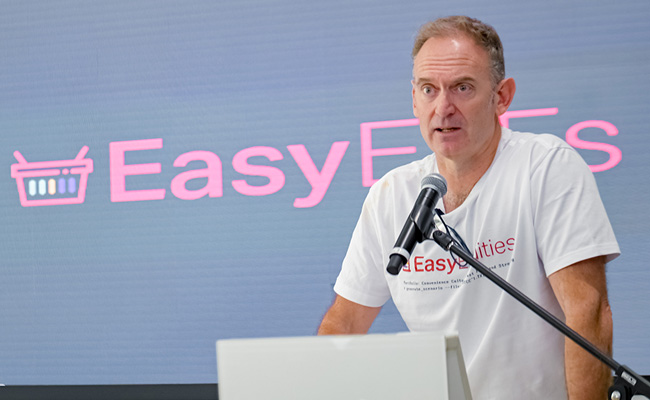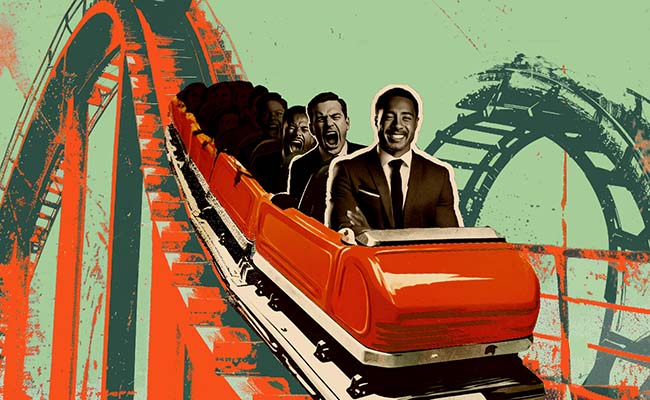As small-cap analyst Keith McLachlan has pointed out, you can’t be talking about sacrificing margins to “maintain liquidity and ensure healthy inventory returns” when your shares are priced for perfection. Which helps explain why WeBuyCars stock has dropped 23% in the past month, after jolting the market with a less-than-spectacular trading update. Results out on Tuesday showed a 13.1% rise in revenue, and a 15% increase in core headline earnings, to R937.6m. Yet over one year, the company’s shares are still up 8.6%. CEO and founder Faan van der Walt is phlegmatic about the recent share plunge, and spoke to Currency about the company’s year-end numbers.
Shareholders may not have liked it but, as a business, did you just have to reduce prices in light of the dramatic shake-up that the wave of extremely well-priced new Chinese vehicles has had on our market?
This is certainly not the first time that we’ve seen accelerated depreciation in used-car inventory. I can go back in time and give many examples but the most recent was during Covid when new-vehicle supply was under strain; we soared and had a really good period where used-car prices stayed very buoyant, and that was then followed by new-vehicle supply coming back to normal levels and depreciation took its course again.
This year we’ve seen that with a portion of our stock, where a lot of these new vehicles are being sold at a price point of around R400,000/R500,000, where a lot of these Chinese cars make a very compelling case.
So the losers here are consumers who bought cars for around R600,000 a year or two ago from the traditional manufacturers – and those cars have steeply depreciated. We had to adjust our prices; time does not fix that problem. We acted proactively and this is normal.
“Adjusting selling prices” is quite veiled; how much on average did you have to cut prices by?
Let me put it like this: the average age of vehicles that WeBuyCars sells is a very good reflection of the South African vehicle car parc, which consists of around 12-million vehicles, with an average age of nine to 10 years. So that’s the average inventory, with an average value of R160,000 per car. And obviously there’s a portion of very new cars, but as a percentage of our total stock holding that’s fairly small, and that’s usually what gets impacted with these market fluctuations. The more the vehicle ages, the more predictable its value, and the flatter the depreciation.
Has the explosion of these Chinese brands brought about a permanent change to the South African car market?
So, you know, here in my study I have a complete collection of all the car magazines that have come out of our history in South Africa – going back to the 1960s. And if I look at, say, 1980 and the new list of cars and the manufacturers, there’s a vast difference from what we have currently. Manufacturers have come and gone; some come in and stay and have been very successful – like Kia and Hyundai.
The question is which of these Chinese brands will make it. I recently read that there are 130 vehicle manufacturers in China and analysts argue that there’s probably room for 30 to produce vehicles sustainably. So not all the brands are equal, and not all the brands entering the South African car market will survive. It’s probably better to support the ones that have already established a reputation in South Africa – like Chery, Haval or GWM. But some of the other new brands have great support internationally – like BYD, so that’s probably also a brand that has a fairly safe future when it comes to servicing and parts back-up.
It must be a relief to be vehicle agnostic. Is this the competitive advantage, ultimately?
Ja. Every new car sold today is a future used car. So the more brands coming into the country expand the long-term pool of stock.
You hit a record of 16,294 vehicles sold in November 2024, and vehicle sales have topped 15,000 for six of the past 12 months. What is your market share now?
There are two ways we calculate this and we arrive at the same answer – but every month eNatis puts out statistics of how many used vehicles are being registered, and last month it was 160,000. And if we look at the past five years it’s just over 1.7-million a year. So if we take our recent volumes that gives us about 10.5%-11% of used-vehicle registrations, and if we rewind to 2021, we were sitting at 5.2%. So we’ve doubled market share, which is why we feel there’s quite big scope for growth.
Now, there are sceptics who don’t trust the eNatis stats, so the different way of doing the calculation is to look at the 12-million cars on South African roads. Now, if it is a car bought brand new, the average ownership period is five years; so let’s say cars less than five years old have not yet been traded, it means we’ve got to subtract about 3-million cars from that carpool – i.e. 9-million. Our stats show that used vehicles get traded every three or four years, but let’s say they only get traded every five years – that’s the balance (9-million) that gets traded every five years, so 1.8-million are traded every year and you get to the same figure of about 150,000 or 160,000 a month.
There’s still plenty of scope to grow. And the question I ask my management team is: should it be harder or easier to gain more market share as you grow? My argument is that it should be easier: you’ve got economies of scale, you’ve learnt the lessons, you’ve got the footprint. So we’re on target for 23,000 by 2028 – which should represent about 18% market share and there’s no reason we can’t go beyond that.
Why’s that your number?
You’ve always got to have a number; if you’re not aiming at something you’re definitely going to hit something. But it’s a milestone; it’s not the goal or finish line.
As for your announcement of a deputy CEO – that of Wynand Beukes – is it indicative of what the company’s about that he’s your chief digital officer?
He is our chief information officer but he’s far more than that; he’s a great leader, he has a deep understanding of all the workings in the business and he’s proven himself in terms of delivering in time and managing a very large group of individuals in the IT department and beyond. He’s a strategist and an outside-the-box-thinker and I’ve been working with him for eight years, so when we did our internal benchmarking and got everyone’s feel about who should be the successor, everyone was in agreement that he’s the natural person to do that. There’ll be a transition period of a year or two before I hand over my CEO responsibilities to him.
WeBuyCars is my baby, I’ll always be involved and be a shareholder, I love working in the business and playing my role.
It’s very well announced though – and this doesn’t always happen. Is it precisely because WeBuyCars is your baby?
Look, for me the ultimate test of an entrepreneurial business is for the business to survive beyond the founders. And it’s a legacy I’d love to leave behind so it’s important for me that this next phase must be a success.
Top image: WeBuyCars’s Faan van der Walt. Picture: supplied.
Sign up to Currency’s weekly newsletters to receive your own bulletin of weekday news and weekend treats. Register here.













